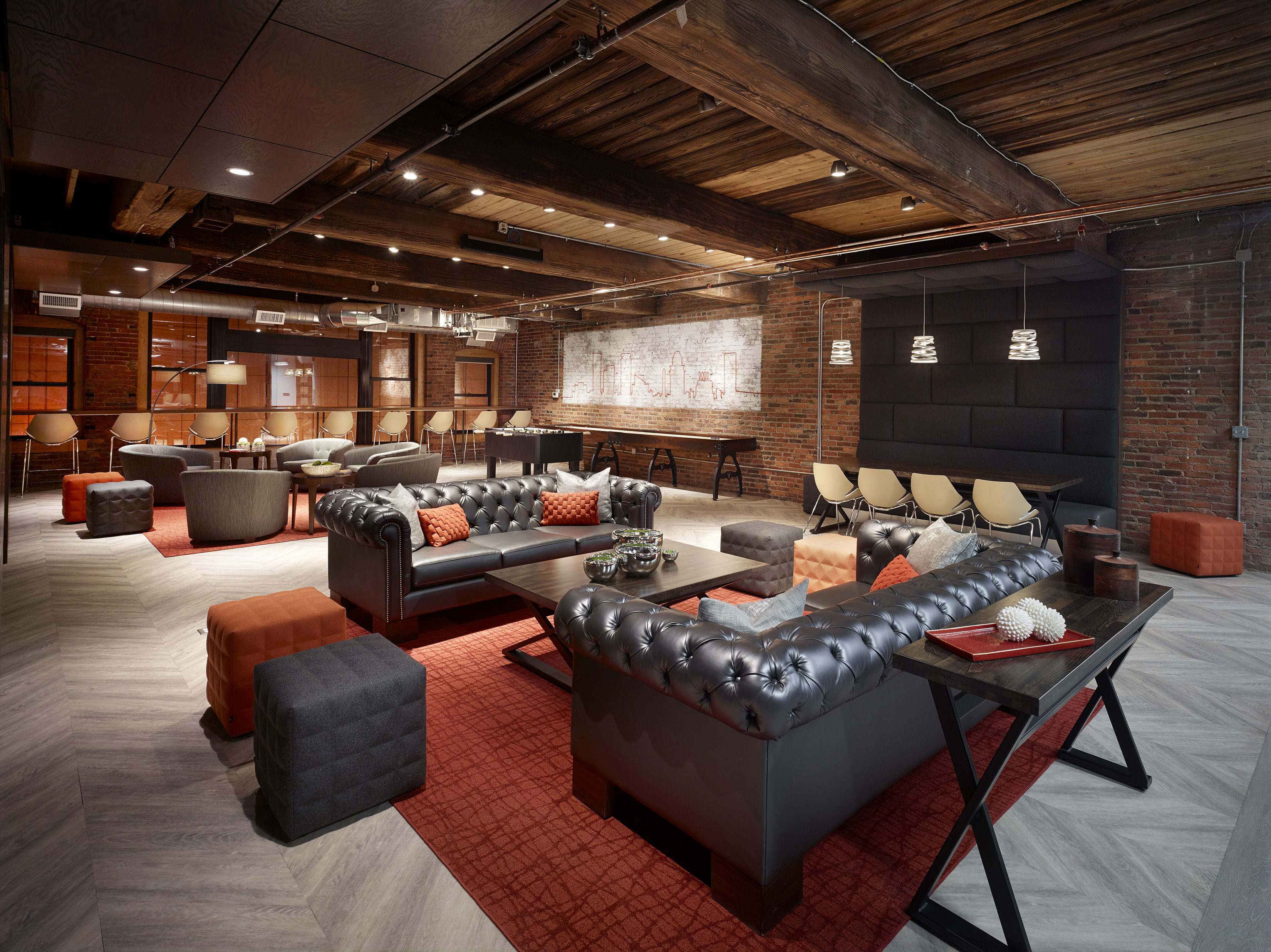Now that employees and employers alike have proven that remote or hybrid work environments can be productive and sustainable, it has become incumbent on companies to “earn their workers commute.” Employers need to offer amenities, opportunities and other intangibles that differentiate the workplace from the home. In many cases, organizations are turning to interior design professionals to reposition workplaces to best react to these changing dynamics and help lure employees back.

Spark Baltimore was an early adopter in the creation of social spaces supporting the workplace ecosystem as seen in this image of creating spaces of comfort within the context of an “office space”. Photo credit: Patrick Ross Photography
“When helping companies design or reposition their interior spaces, I often ask if they consider the word ‘work’ to be a verb or a noun, because that perception helps our team define how they expect employees to react to the space,” explained Kelly Ennis, Founding and Managing Principal of The Verve Partnership, a Baltimore-based interior design firm. “For years, when employees said they were ‘going to work,’ it implied performing a specific action or task but, in the modern day, it is important to position work as a place where things get accomplished and, as importantly, interact with like-minded professionals.”
Ennis cites the historic concepts espoused by Frederick Taylor – also known as “Taylorism”- which used scientific methods to analyze the most efficient production process in order to increase productivity and later found their way into the workplace vernacular.
Taylorism celebrated the structure of a “9-5” workday with set timeframes for arrival, work itself, breaks and departure in a militaristic fashion with no room for deviation. Ennis explained that those ideas were ingrained into the workplace for nearly 100 years, but the introduction of technology and the COVID pandemic have changed everything. Laborers have no flexibility when it comes to where they work everyday but, with the ready to access of files, the average knowledge worker can easily work remotely. So, the allure of traveling to the actual workplace is diminished.
“People are the key component to this equation because they are critical to the creation and maintenance of an ecosystem,” Ennis said. “When employees know that others will be working in the office on a particular day, it heavily influences their decision as whether or not they too will come to the office as well.”
Interior designers need to tap into this formula by designing spaces that strengthen the ecosystem and encourage a co-working mindset.
According to John Hutch, Principal at JP2 Architects, creating a workplace ecosystem goes beyond the physical. Since most people are hardwired with a need to be together, it is important to re-establish personal connections among team members so there is both a joy and value of working in the office, he said.
“For a team to work effectively while remote, employees rely on the connection and relationships they have established from past in-person encounters,” Hutch stated. “The elements of trust, quality of work and presence of a comfort level to ask questions needs to be in place for any workplace ecosystem to function properly.
“Working in person allows us to draw upon the collective knowledge of the team more effectively rather than simply relying on one’s own knowledge and experiences. This is especially true for young or new employees that have relationships with their team members. Creating a work environment, or ecosystem, to establish personal connections is critical. Sometimes the value of being in the office is as simple as overhearing someone’s need or question and being right there to provide an answer.”
“Based on the size of the company, the creation of an ecosystem could involve the incorporation of socially shared spaces or zones where employees gather to collaborate for a period of time before returning back to their private workspace. It is important to note that a one-size-fits-all space solution does not exist,” Ennis added. “Depending on workplace culture, industry sector and other variables, the addition of a wellness program, yoga studio, small fitness center or after-work bar might be appropriate for some companies but not all. These particular decisions are arrived at based on many conversations and the analysis of how employees interact with the workspaces.”
“Some of our best ideas start from a casual conversation that then turns into a deeper thought process and better solution for our clients,” Hutch said. “These casual conversations are difficult to simulate when working remote, so it is important to create the right culture and physical space to allow those interactions to happen within the workplace.”